WASHINGTON — The 2022 midterms are a year away and much of the next 12 months will be spent looking for winners and losers and discussing the nation’s political balance of power. But the bigger, broader story in politics today is the identity crises in the nation’s two dominant political parties. What are the Democratic and Republican parties about and where are they going?
This week, Meet The Press unveils its 2022 edition of County to County: Seven communities located in different states across the country, each one offering a chance to explore different aspects of the Democrats and the GOP.
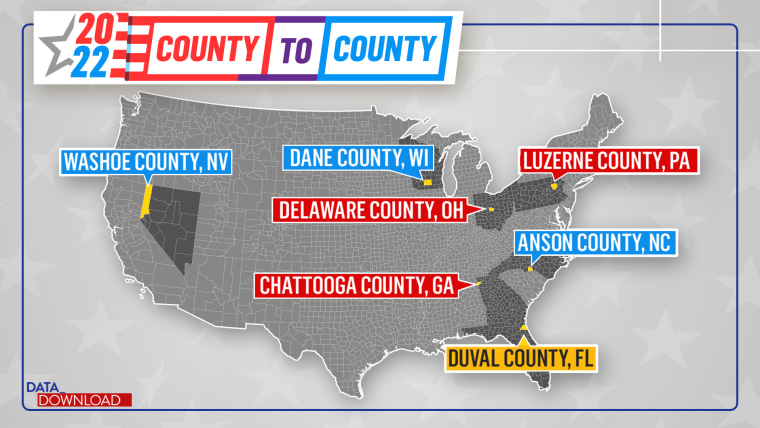
- Anson County, North Carolina
- Chattooga County, Georgia
- Dane County, Wisconsin
- Delaware County, Ohio
- Duval County, Florida
- Luzerne County, Pennsylvania
- Washoe County, Nevada
Over the next year, NBC News reporters will visit these places repeatedly, get to know them and offer deeper explorations into what voters in them are thinking about the issues that will shape American politics in these midterms and after. The counties were chosen with the help of the American Communities Project at Michigan State University.
The Democratic Group
Young voters make up the margins in Dane County, Wisconsin. The state capital and home to the University of Wisconsin-Madison, Dane is a solidly Democratic bastion of liberalism. President Joe Biden won the county by some 53 points in 2020.
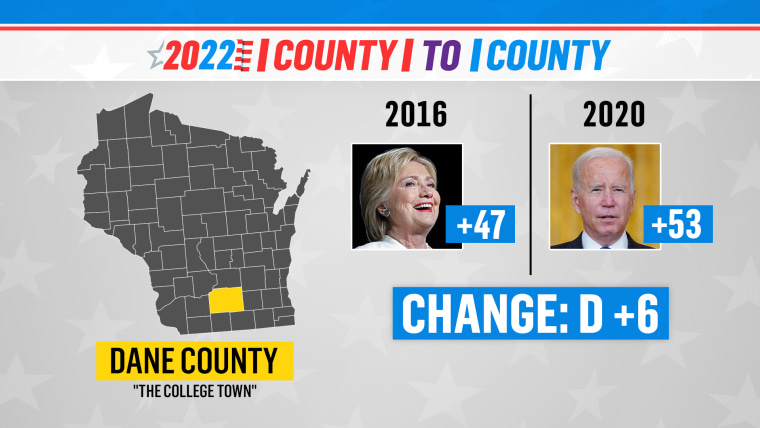
Two big issues drive the story here. First, are young voters, who often don’t pay close attention to midterm elections, tuned in? And second, are the liberal voters here supportive of the Democrats’ approach in Washington? In 2016, when the Democratic primary fight was close, Dane voted for Vermont Sen. Bernie Sanders by 25 percentage points over Hillary Clinton.
Rural Black voters are in Anson County, North Carolina. A county along the South Carolina border, Anson has long voted Democratic because of its large African American population. It is sparsely populated, but pretty evenly split between African American and white, non-Hispanic voters.
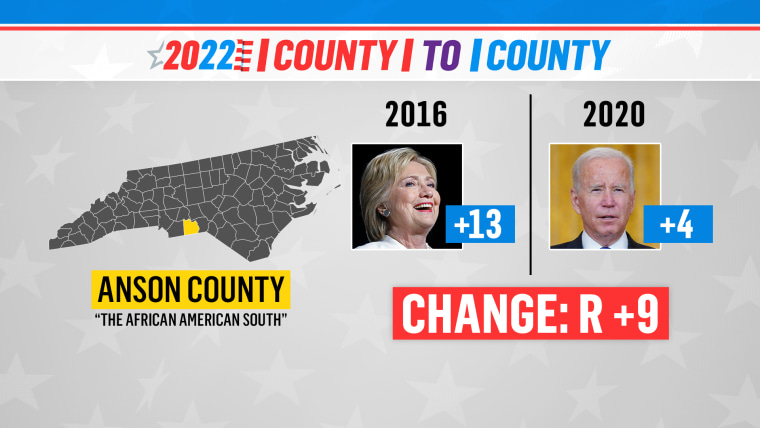
But in 2020, Biden won this county by only 4 points over Donald Trump, while Hillary Clinton carried it by 13 points in 2016. It is a place to measure whether the Democratic Party is engaging and turning out the rural Black vote, a big part of the party’s strength in the South.
Suburban Democrats are in Washoe County, Nevada, which includes Reno. The county was once solidly Republican, but since 2008 Washoe has voted Democratic in every presidential election, due to a growing and diversifying suburban population and imported tech jobs from California.
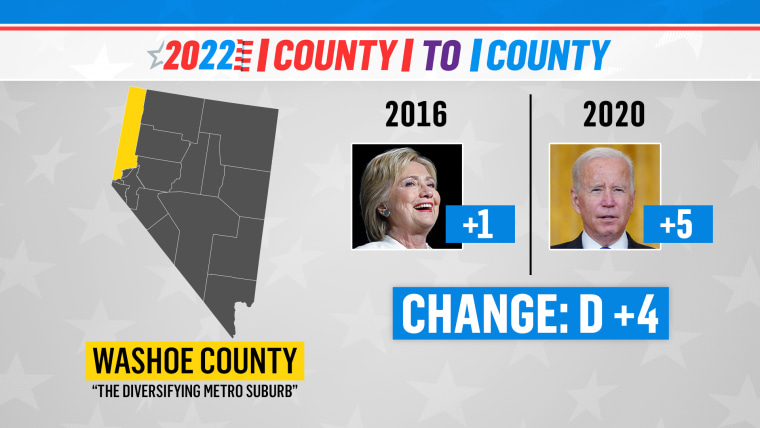
The county represents the growing edge Democrats have in educated suburban communities. Clinton narrowly eked out a one-point win in Washoe in 2016, but by 2020, Biden had bumped the margin up to a more comfortable five points. It’s a place to measure the Democrats’ strength in the suburbs in 2022.
The Purple Battleground
Duval County, Florida, is home to metropolitan Jacksonville, a sprawling expanse that goes from city to suburb to exurb and even to rural all in about 762 square miles. Duval is a complicated landscape that shows what a true swing county looks like.
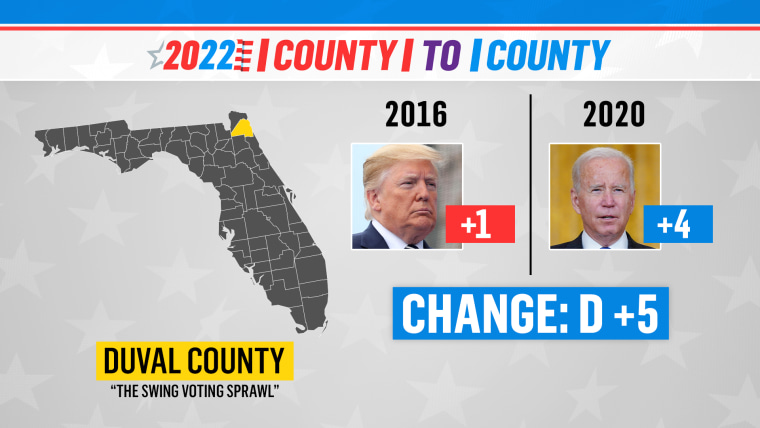
The Jacksonville mayor’s office has swung between the two parties over the past 30 years and since 2008, the county has been within 4 percentage points in every presidential election. In 2020, Biden won Duval by four points, swinging it Democratic after it voted for Donald Trump in 2016.
The Republican Group
Evangelical voters are big in Chattooga County, Georgia. In the northwest corner of the state, this rural county's support for Trump grew in 2020 (he won it by 62 percentage points) even as the state flipped blue. About 40 percent of its population is evangelical Protestant, according to the Association of Religion Data Archives, an important segment of the vote for the GOP.
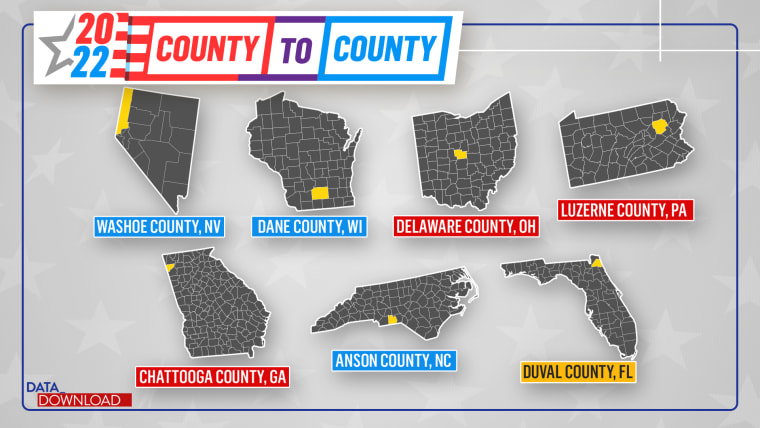
But will these voters, who strongly supported Trump, show up if his name is not on the ballot? And, considering the distrust of the 2020 election results in communities like Chattooga, do voters here even think voting is worthwhile?
Blue-collar voters are in Luzerne County, Pennsylvania. Near Scranton, this home of Wilkes-Barre and Hazelton was once reliably Democratic, full of voters who supported and were members of unions. That has changed in recent years and Trump’s rise in the GOP pushed Luzerne to the red side of the political color wheel.
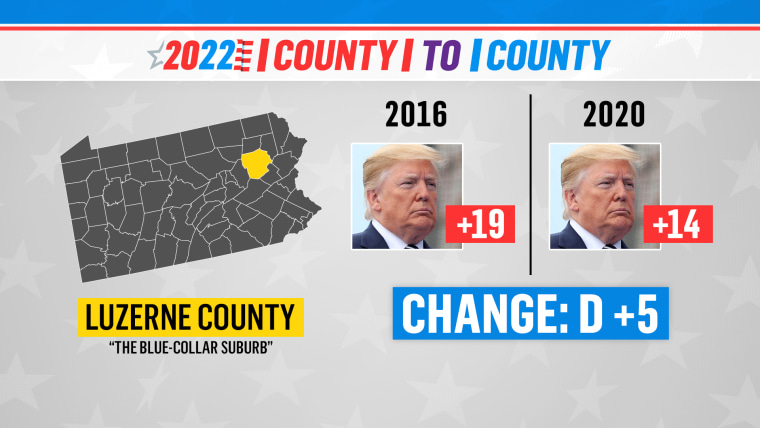
Biden did a little better here in 2020 than Hillary Clinton did in 2016, but Luzerne was still Trump country. He won it by 14 points last November. Can Democrats keep Biden’s small inroads here, and perhaps build on them? That’s big question across the Great Lakes and the Midwest where there are a lot of counties like this.
Look to exurban moderate Republicans in Delaware County, Ohio. Just north of Columbus, wealthy and well-educated, this county was once one of the most reliably Republican in the state. GOP presidential nominee Mitt Romney won Delaware by 23 percentage points in 2012. In 2020, Donald Trump won it by only seven.
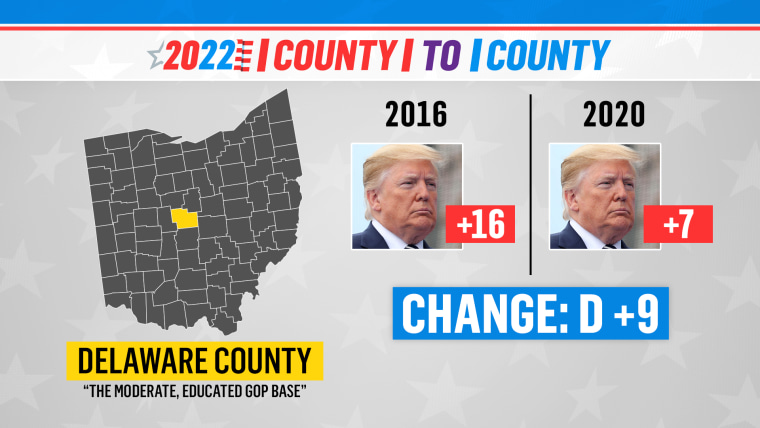
Some of that change is due to new people moving in, but a lot of it is about old-school Republicans disapproving of where Trump is taking the party. The Democrats have already taken over the swing-y suburbs, and Delaware is a test of how far that blue reach is going to go, and how quickly. The vote here in 2022 may offer some clues.
To be clear, these seven counties are not bellwethers. Before the campaign even begins we know some will vote Democratic and some will vote Republican. In nearly all of them, however, there are issues of margin and turnout. And, it should be noted, each one of the counties here is in a state with what could be a close Senate race.
But each community is about more than just that place. There are liberal-leaning Dane Counties across the country where there are major college towns, just as there are many Chattoogas that are full of solid Trump supporters. The rural Black vote is about more than Anson, it can be seen across Georgia and even northern Florida.
These seven counties provide a way to see how important slices of the electorate from both parties are moving and changing on the ground in real communities. They can provide insight into the beliefs and attitudes of important parts of the two parties and offer hints about what’s to come in the realignment that is remaking American politics.
That’s a story not just for 2022, but for the years to come.
